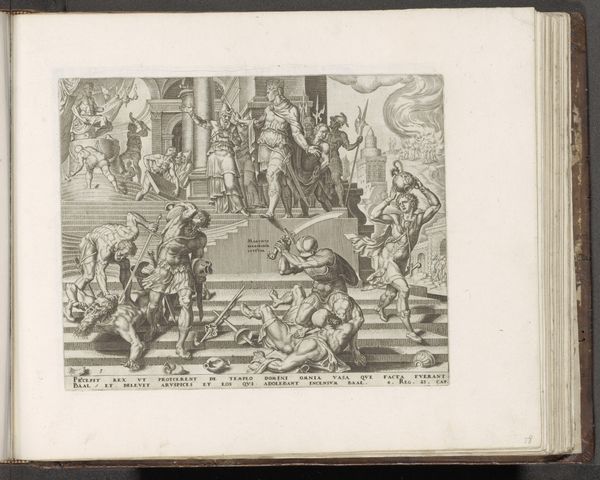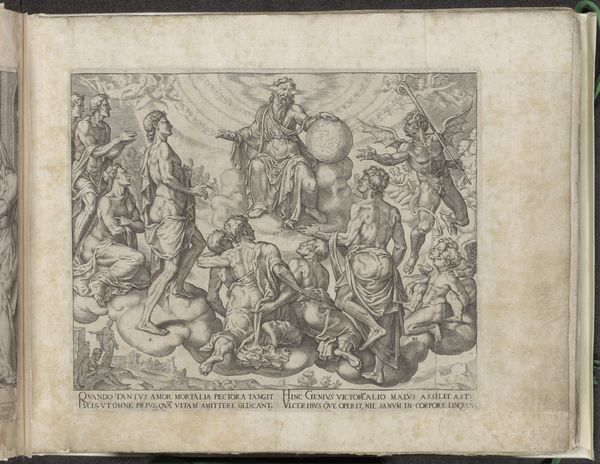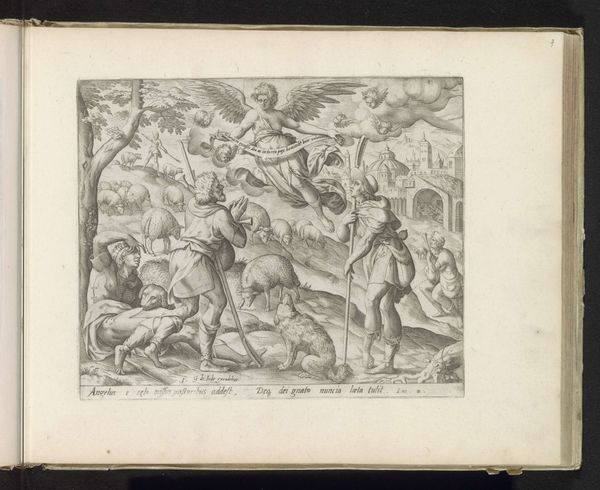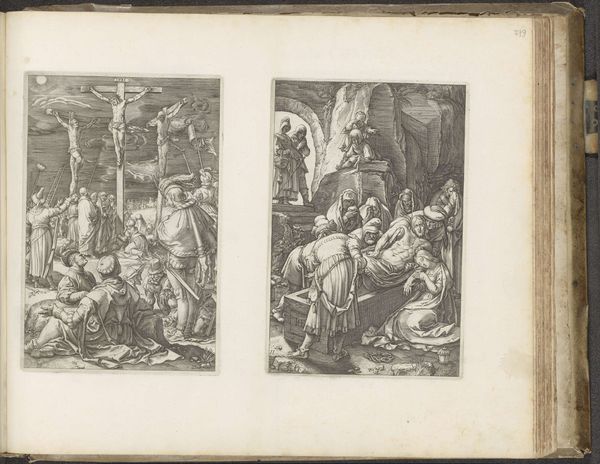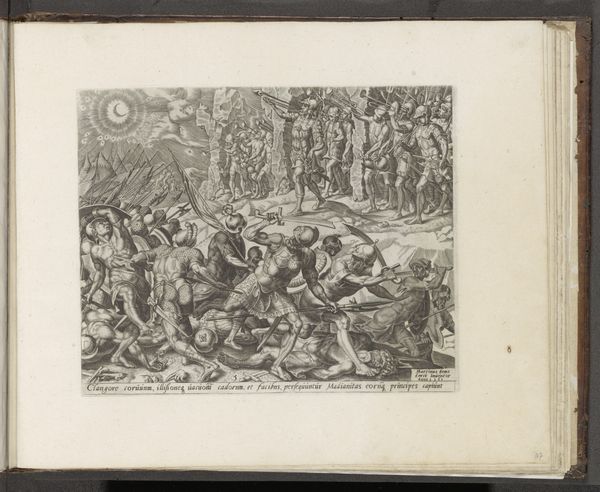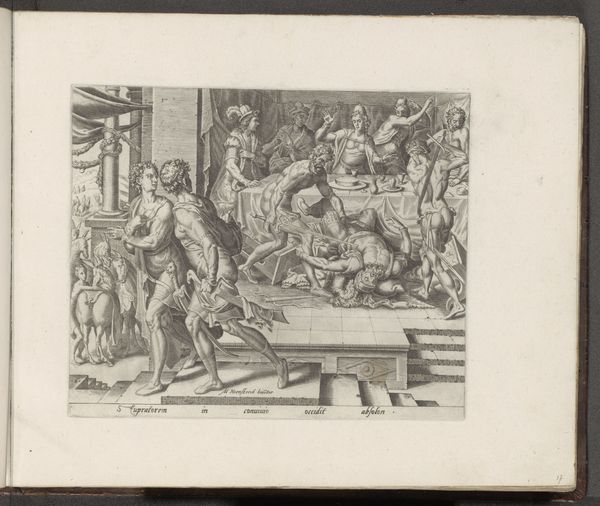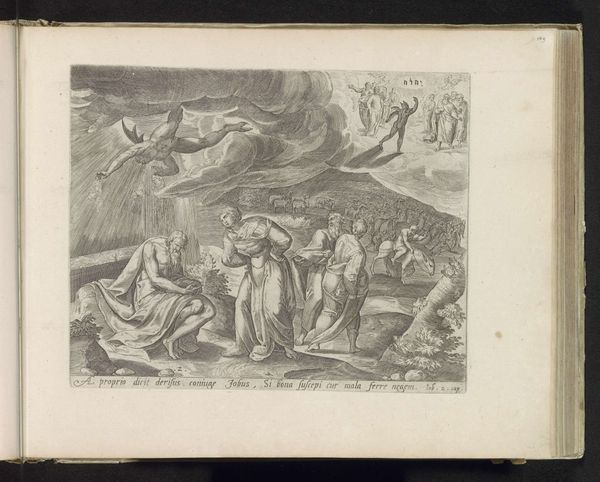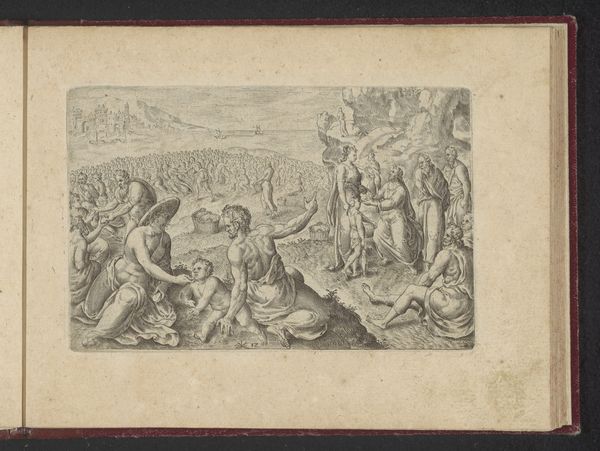
engraving
#
narrative-art
#
mannerism
#
figuration
#
history-painting
#
engraving
Dimensions: height 201 mm, width 247 mm
Copyright: Rijks Museum: Open Domain
Editor: This is an engraving called "Gideon Destroys the Altar of Baal," made sometime between 1561 and 1579 by an anonymous artist. It depicts a lot of men in a scene that seems very destructive but also organized. What do you see in this piece, especially given the, shall we say, controlled chaos? Art Historian: Controlled chaos is an apt description! As an iconographer, I'm drawn to the layering of meaning here. Notice how the destruction isn't random. It's a deliberate act, almost ritualistic in its execution. Consider the figure wielding the pickaxe at the altar's summit; his posture speaks to the fervor driving the group's collective mission, reflecting iconoclasm. What do you think is the psychological force that fuels such an undertaking? Editor: I guess a kind of purified zealousness, wanting to cleanse their community of what they deem wrong... perhaps. There seems to be something else though... a tension, maybe in destroying one thing and building another. The bottom left seems to reflect the altar under construction that is referred to in the artwork's description, mirroring the destroyed alter. Art Historian: Precisely! The destruction of one symbol facilitates the construction of another. The cultural memory embedded in this act speaks to more than just religious zealotry; it hints at the complexities of societal change, where dismantling old ideologies is believed essential to lay the foundation for new values and customs. What enduring messages resonate for us? Editor: It highlights how charged images are with the emotions and belief systems of a society and even generations. Art Historian: Indeed! Symbols hold power to shape our perception and beliefs. And iconoclasm isn't relegated to the distant past. Examining the underlying tensions around iconoclasm can give us deeper insights. Thank you for a wonderful observation. Editor: Thank you; that perspective really clarified what I found so intriguing.
Comments
No comments
Be the first to comment and join the conversation on the ultimate creative platform.


